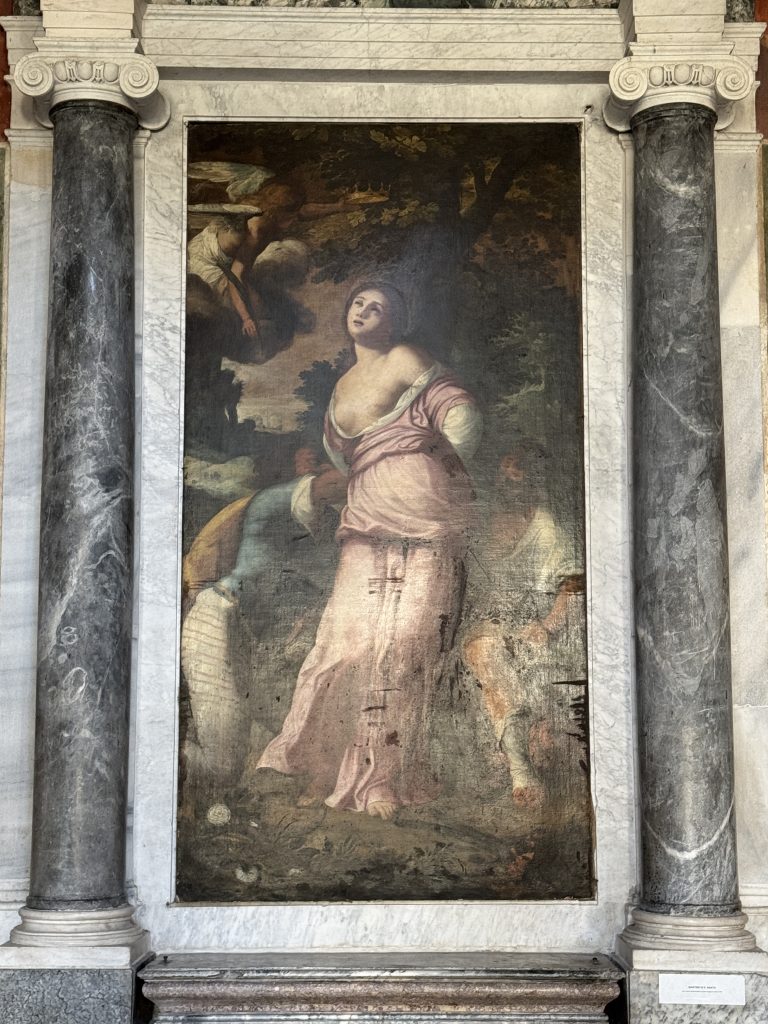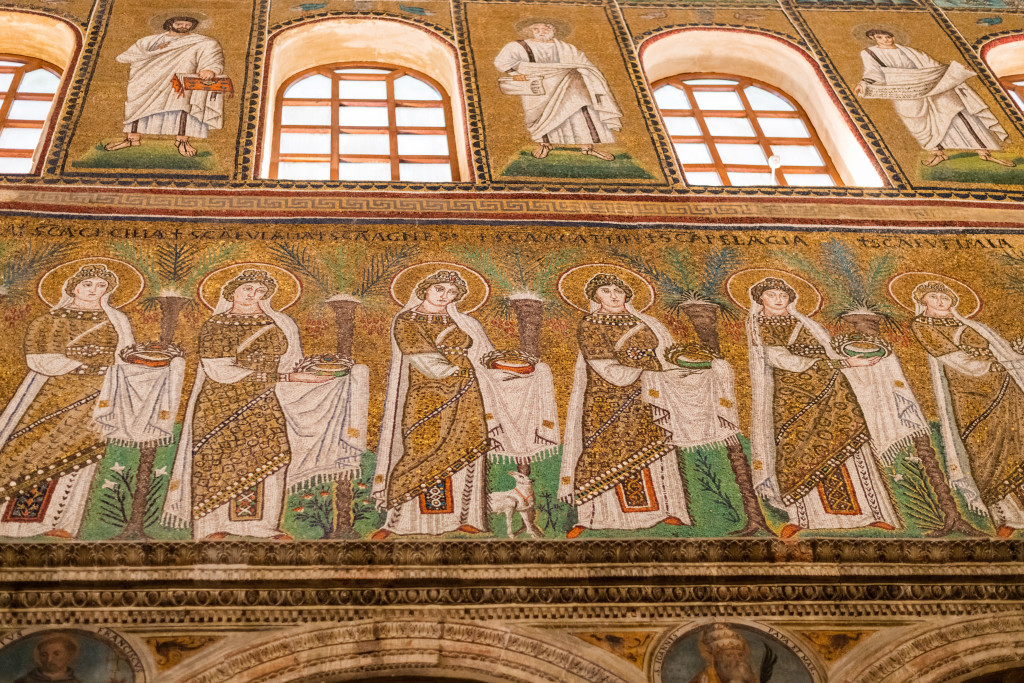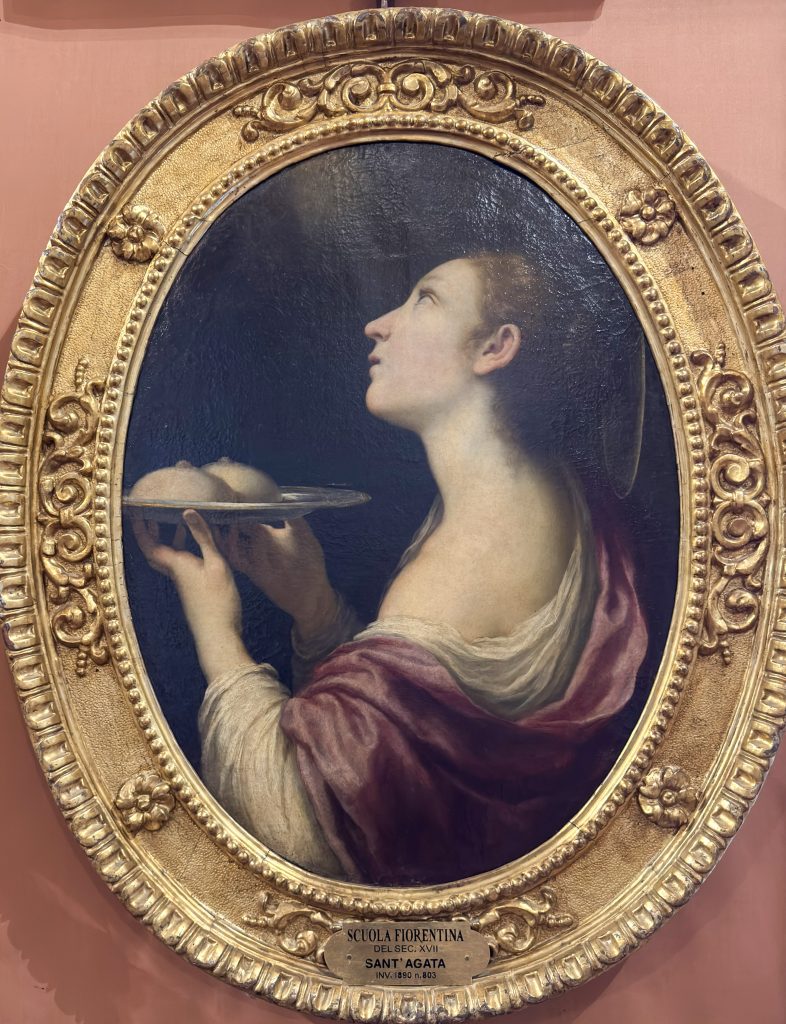Agatha
3rd Century Martyr
Agatha of Catania in Sicily is a virgin martyr who lived in the 3rd century CE during the time of Emperor Decius. Although Decius only ruled briefly (249-251 CE), his reign was marked by great persecution of Christians. Agatha stands as testament to the faith of many who were tortured and killed for their devotion to Christ during this perilous time.
Biography – Agatha was born to a wealthy noble family in 235 AD. As a young teen, Agatha wished to be consecrated to the Lord and received from her bishop the red veil common to virgins. In 250 AD, the Emperor Decius made an edict to persecute Christians. In Catania, the Roman proconsul Quintianus, who had an obsession with Agatha, was in command of the edict’s implementation, and he abused his power to punish her for refusing his advances. Agatha ran away to Palermo but was captured and dragged back and refused again to renounce her faith. Quintianus was incensed and sent her to a house of prostitution for thirty days in an attempt to corrupt her virginity. Agatha remained chaste and faithful to her betrothal to Christ. She was sent to another trial, and The Acts of the Martyrdom of Saint Agatha recounts the discourse between Quintianus and Agatha. Continuing to refuse to deny her faith, Agatha was brutally tortured, including an attempt to burn her at the stake.
Agatha’s torture exemplified some of the worst of sexual violence against women, especially women who refuse male advances. She was tortured on a rack (often referred to as a tree or cross with great symbolism of the crucifixion of Jesus) where her limbs were stretched and nearly torn from her body, and in a particularly gruesome act of violence, her breasts were cut off. Attempts to execute her were unsuccesful and Agatha was eventually returned to prison where she died in 251 CE.
Agatha is often portrayed in art holding her own severed breasts on a platter or hanging around her neck, as well as portrayed with large pincers representing the barbaric tool used to tear her breasts from her body. She is also sometimes graphically depicted naked and bound as men tear her breasts with large tongs or pincers. While these images demonstrate the sexual subordination of women at the hands of power and empire, an argument can be made that their depictions cross a line into voyeurism.
Agatha has numerous churches dedicated to her, and she is also part of the Procession of Female Martyrs in the Basilica Sant’Apollinare Nuovo in Ravenna, Italy, where she is specifically named and stands between Agnes and Pelagia. Notably, her image in the mosaic shows a clearly defined silhouette complete with a curve of breasts, such that she is fully restored in body as she joins with other saints to worship Christ.
Resources:
- Apostolos-Cappadona, Diane. Dictionary of Women in Religious Art. New York, Oxford: Oxford University Press, 1998.
- Little, Brown and Company, ed. One Hundred Saints: Their Lives and Likenesses Drawn from Butler’s “Lives of the Saints” and Great Works of Western Art. New York: Bulfinch Press, 1993.



